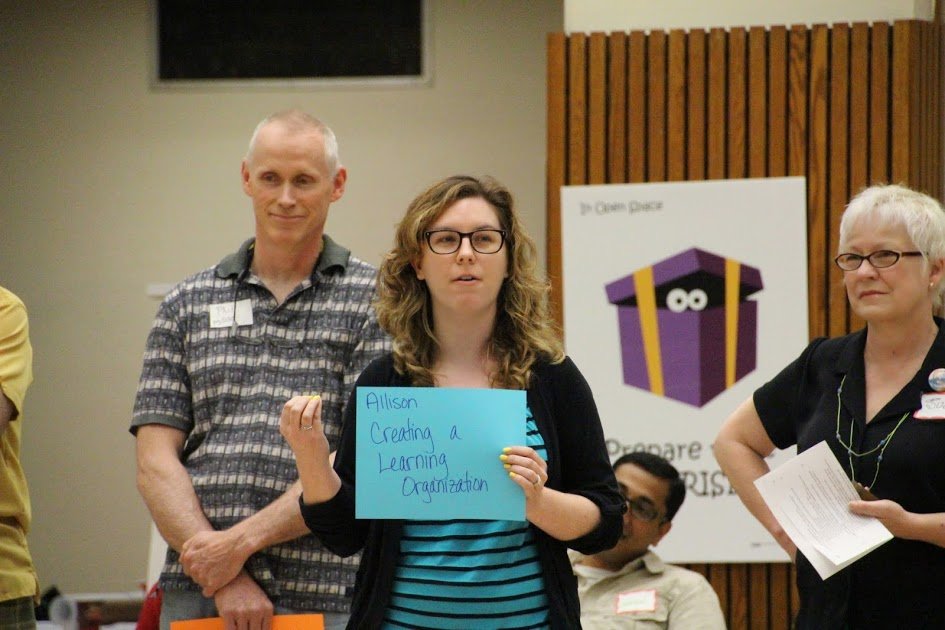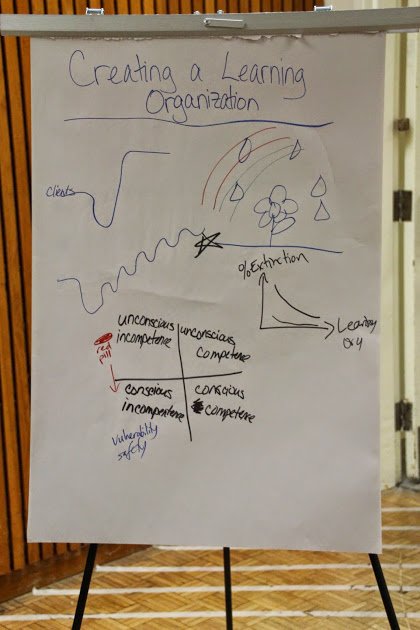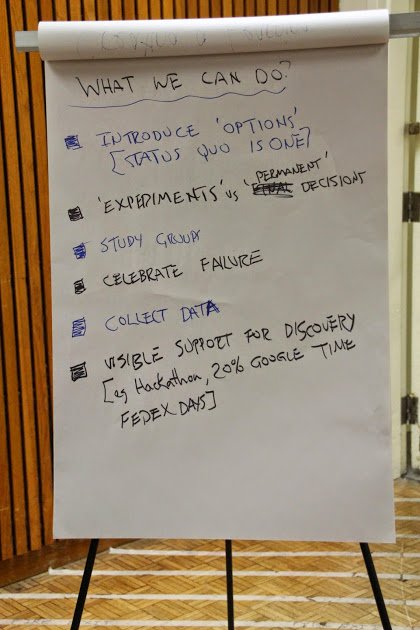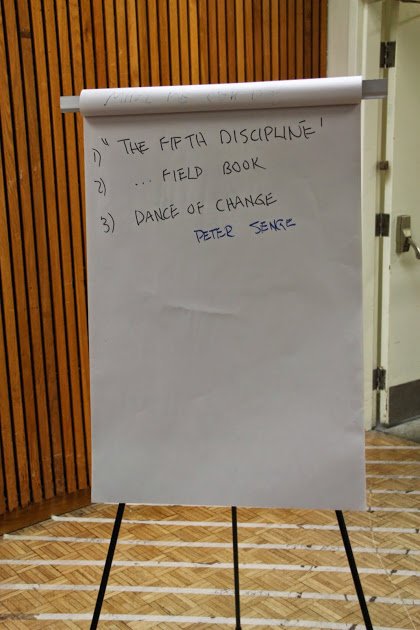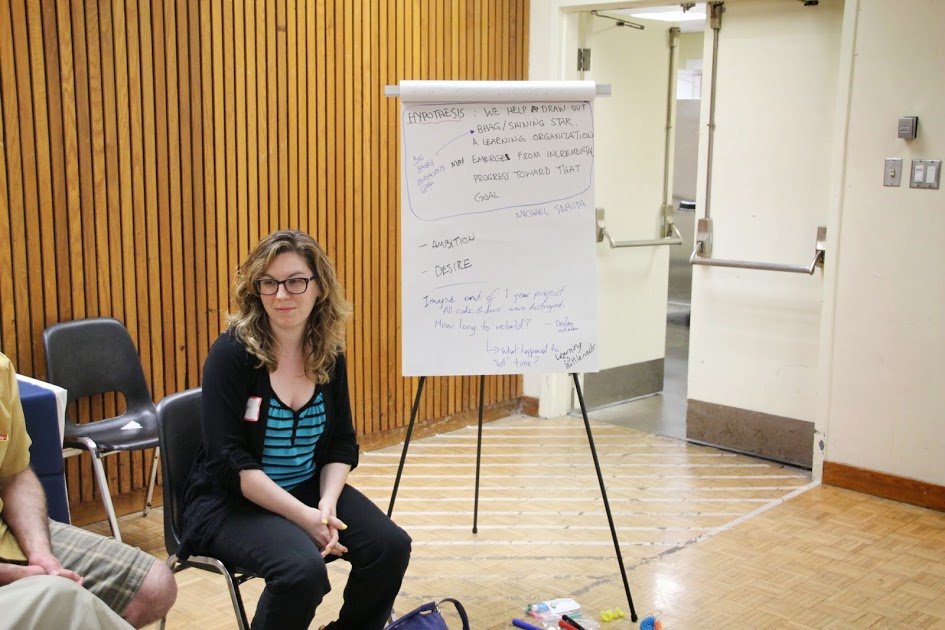Open Space Summary: Creating a Learning Organization
I made my first open space offering! Below are some of the points we discussed on “Creating a Learning Organization” at Agile Coach Camp Canada 2014.
As a consultant, I am often brought into a client organization to help them go from their current state to a new and improved state. Change is not easy for most people and organizations. The Satir change model depicts the phases of change, and the change described in the model is positive overall: the performance of the system is improved. But in the middle there is a drastic drop, the Chaos phase. That’s where the turbulence is.
Last year, I conducted an end-of-year retrospective at a client organization and asked people to draw pictures of what it had felt like to learn and change over the year. There was an image of exploding brain. A juggler. And the one that resonated with me the most: a flower sprouting from the ground as rain falls and a rainbow soars above. Some folks recognized that learning and changing meant rain and storms might happen but something beautiful would emerge in the end! We called it “Over the Rainbow.”
That image has caused me to give more thought to how I help my clients. I can help them through the change model and leave them in an improved state, but what then? Have they simply reached a new plateau, or are they more capable to make future changes? What if instead of a one-time radical change (like kaikaku) the client also knew how to make continuous improvements (like kaizen)?
Clients rarely ask upfront for real transformations or to become learning organizations, but as we work with them and continue to explore possibilities, these larger goals may emerge. Coaches do not define the client’s agenda—coaches help the client to clarify a goal or vision and take action to achieve it. We help draw out BHAGs (big hairy audacious goals) or shining stars, and a learning organization may emerge from incremental steps to achieve the organization’s goals. Organizations might ask why—why is it important to become a learning organization? The more capable an organization is of learning, the less likely it is to become extinct. Given the increasing rate of change in business, learning is a necessity to stay ahead of the competition.
In order for people to continuously improve, they must regularly try new things and learn, which means going through the stages of competence over and over and over:
- Unconscious incompetence – we don’t know what we don’t know.
- Conscious incompetence – we recognize what we don’t know. Practice and making mistakes can be vital here.
- Conscious competence – we know how to do something but doing it requires concentration.
- Unconscious competence – we have had so much practice with a skill that it has become "second nature" and can be performed easily. We may also be able to teach it to others.
The conscious incompetence stage often means people are vulnerable, and an organization needs to provide safety for employees to be in that stage so they are able to stretch and learn.
So as agilists, what can we do for the organizations we work in to create safety for a learning organization?
- Introduce “options” – brainstorm multiple ideas about what to do next. Keeping the status quo is one option.
- Talk about “experiments” – emphasize that decisions are not permanent. We learn by trying something for a period of time and evaluating it.
- Create study groups – form communities of practice or book clubs to emphasize learning together.
- Celebrate failure – making mistakes is a part of learning, and recognizing mistakes is important.
- Collect data – observe and analyze your current state. It is important to understand what is going on in order to determine what to change or improve.
- Show visible support for discovery – host hackathons, introduce Google’s 20% time or FedEx Days to promote innovative thinking.
Learning is the bottleneck in software development. Perhaps in order to improve software delivery, the learning capacity of an organization must be increased.
Other resources on learning organizations:
- The Fifth Discipline by Peter Senge
- The Dance of Change: The Challenges of Sustaining Momentum in Learning Organizations by Peter Senge
- Presentation on Growing a Learning Organization from the Bottom Up by Matt Barcomb


